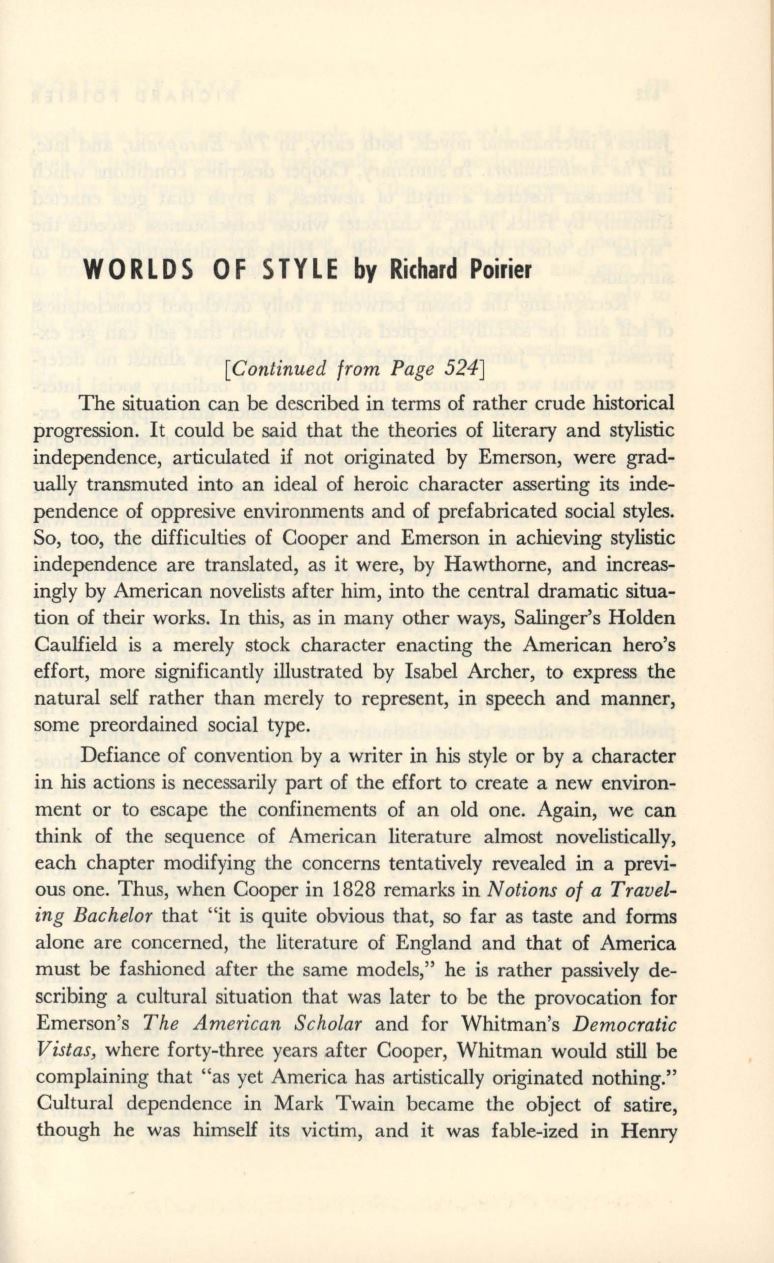
W0 RLOS 0 F STY L
E by Richard Poirier
[Continued from Page 524]
The situation can be described in terms of rather crude historical
progression.
It
could be said that the theories of literary and stylistic
independence, articulated if not originated by Emerson, were grad–
ually transmuted into an ideal of heroic character asserting its inde–
pendence of oppresive environments and of prefabricated social styles.
So, too, the difficulties of Cooper and Emerson in achieving stylistic
independence are translated, as it were, by Hawthorne, and increas–
ingly by American novelists after him, into the central dramatic situa–
tion of their works. In this, as in many other ways, Salinger's Holden
Caulfield is a merely stock character enacting the American hero's
effort, more significantly illustrated by Isabel Archer, to express the
na tural self rather than merely to represent, in speech and manner,
some preordained social type.
Defiance of convention by a writer in his style or by a character
in his actions is necessarily part of the effort to create a new environ–
ment or to escape the confinements of an old one. Again, we can
think of the sequence of American literature almost novelistically,
each chapter modifying the concerns tentatively revealed in a previ–
ous one. Thus, when Cooper in 1828 remarks in
Notions of a Travel–
ing Bachelor
that "it is quite obvious that, so far as taste and forms
alone are concerned, the literature of England and that of America
must be fashioned after the same models," he is rather passively de–
scribing a cultural situation that was later to be the provocation for
Emerson's
The American Scholar
and for Whitman's
Democratic
Vistas,
where forty-three years after Cooper, Whitman would still be
complaining that "as yet America has artistically originated nothing."
Cultural dependence in Mark Twain became the object of satire,
though he was himself its victim, and it was fable-ized in Henry


